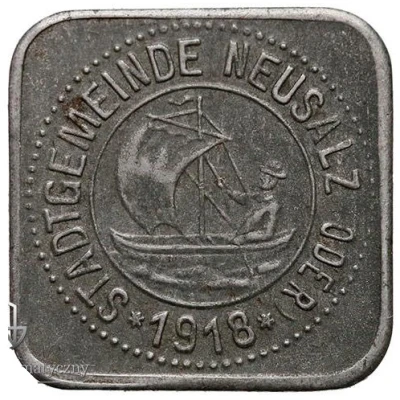


© Willem63 (CC BY-NC-SA)
10 Pfennigs - Neusalz a. Oder (Gruschwitz Textilwerke Akt. Ges.) ND
| Iron | 2.5 g | 20.7 mm |
| Issuer | City of Neusalz (Silesia) (Prussian province of Silesia) |
|---|---|
| Type | Standard circulation coin |
| Value | 10 Pfennigs (10 Pfennige) (0.10) |
| Currency | Mark (1914-1924) |
| Composition | Iron |
| Weight | 2.5 g |
| Diameter | 20.7 mm |
| Thickness | 1.1 mm |
| Shape | Octagonal (8-sided) |
| Technique | Milled |
| Orientation | Medal alignment ↑↑ |
| Demonetized | Yes |
| Updated | 2024-10-04 |
| Numista | N#285011 |
|---|---|
| Rarity index | 97% |
Reverse
Pearl rim, with denomination centered
Script: Latin
Lettering: 10
Edge
Plain
Comment
Menzel: BBBIn 1816 the master weaver Johann David Gruschwitz decided to start his own business. In the Silesian town of Neusalz.
Interesting fact
One interesting fact about this coin is that it was issued during a time of economic turmoil in Germany. The 10 Pfennigs coin was introduced in 1923, during the hyperinflation period that followed World War I, when the value of the German mark had dropped significantly. The coin was made of iron, which was a cheaper alternative to other metals, and it weighed only 2.5 grams, making it one of the lightest coins in circulation at the time. Despite its low value, the coin was still widely used in everyday transactions, reflecting the economic challenges faced by the German people during that period.



